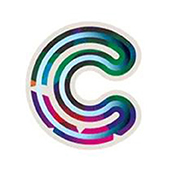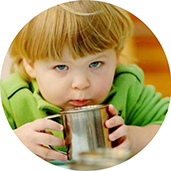
من التربة إلى المعدة: رحلة الميكروبات في الطعام
هل تعلم أن الزبادي الذي تأكله تصنعه كائنات حية دقيقة تُسمّى الميكروبات؟ وهل سبق أن رأيت عفنًا على قطعة خبز؟ هذا أيضًا...
المراجعون الصغار


هل تعلم أن الزبادي الذي تأكله تصنعه كائنات حية دقيقة تُسمّى الميكروبات؟ وهل سبق أن رأيت عفنًا على قطعة خبز؟ هذا أيضًا...


تخيّل وجود مختبر صغير داخل صندوق يمكنه تصنيع الأدوية مباشرةً في المستشفيات التي يُعالَج فيها المرضى، والأجمل من ذلك أن...



هل تساءلت يومًا عن الطريقة التي تتيح للطبيب فحص قلب الإنسان بدون شقّ صدره؟ القلب هو عضو يعمل بجهد في جسم الإنسان، ويمكن...



كيف ينجو الناس في مناطق العالم الأكثر جفافًا؟ من أين يحصلون على الماء وكيف يزرعون النباتات عندهم؟ لا يمكنهم الاعتماد...



رسم العالم غوردون مور في عام 1965 رسمًا بيانيًا يُظهر عدد الترانزستورات –وهي مفاتيح دقيقة يمكننا تشبيهها بـ≪ذرات≫...



اضطراب طيف التوحّد هو مجموعة من الحالات المرتبطة بنمو الدماغ، التي تؤثر على قدرة الشخص على التواصل والتفاعل مع الآخرين...






يعرف الجميع تقريبًا اليوم أن حرق الوقود الأحفوري يضرّ بالبيئة، وأنه هناك حاجة إلى أساليب جديدة لتوفير موارد طاقة صديقة...




إذا كنت تعيش في منطقة ريفية وذهبت إلى مدينة مجاورة أو العكس، فقد تشعر باختلاف في درجة الحرارة بين المدينة والريف. عادةً...



يعدّ قاع المحيط أكبر المواطن على كوكب الأرض وأكثرها أهمية، فهو يقع تحت مستوى سطح الماء بمسافة تتراوح بين 200 و11,000 م...



عالم يرتدي معطف المختبر وقفازات وواقي وجه يستخدم ماصة في محطة عمل. تعرض شاشة الحاسوب سلاسل الحمض النووي وحقنة. تحيط بها...


تصوير توضيحي لشخصين يتفاعلان. يحمل أحدهما جهازاً لوحياً يعرض رسوماً بيانية ورمزاً لفنجان قهوة. يوجد رمز للحد من عدم...




تصوير لعامل يرتدي سترة برتقالية وخوذة صلبة يرفع إبهامه بجانب أرض محفورة مع خريطة وشبكة. شخص آخر يحمل جهازًا لوحيًا يعرض...

